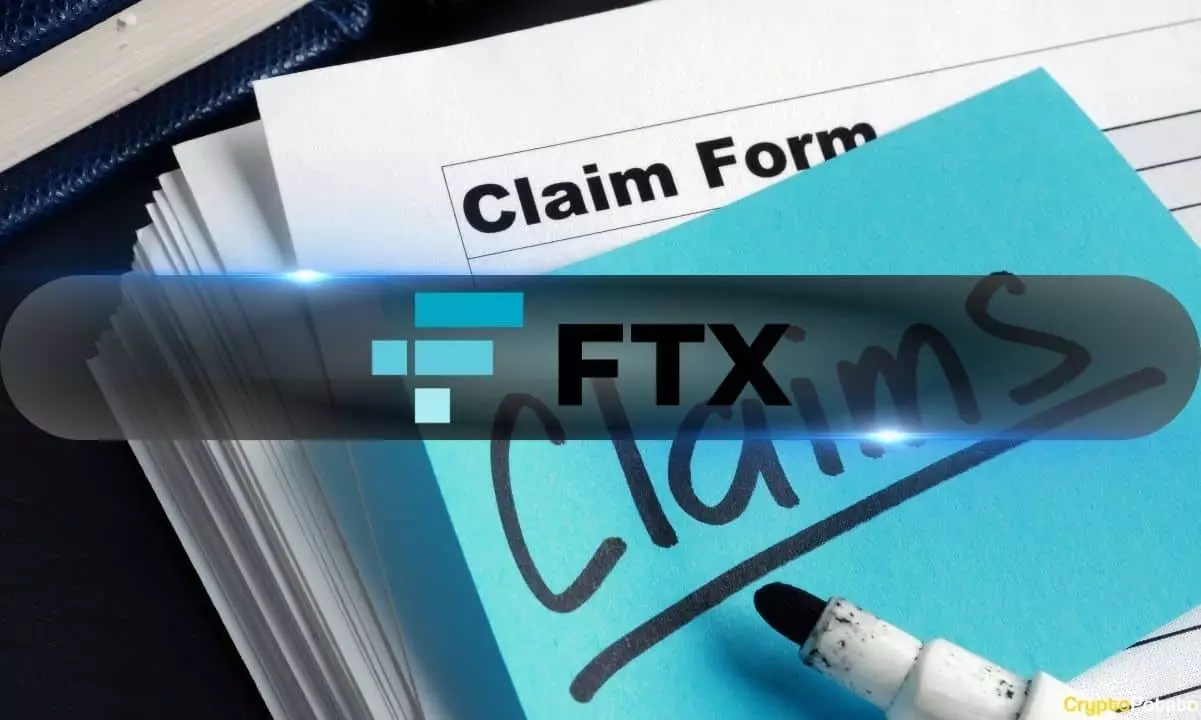In a striking turn of events, the FTX Recovery Trust has announced plans to disburse over $5 billion to its creditors starting May 30. For those following the tumultuous aftermath of the FTX collapse, this payment signals not just recovery but also a complex web of financial maneuvering. As the firm navigates through a maze of shattered investor trust and regulatory scrutiny, it now categorizes creditors into five distinct classes, aiming to streamline the binary complexity of crypto reimbursements into what they call “convenience classes”. This is a notable attempt to bring order to chaos, but it raises profound questions about equity and fairness in the distribution of lost fortunes.
Understanding the Classes of Creditors: Is Fairness an Illusion?
The categorization of creditors into classes is ingenious yet controversial. Class 5A will receive a staggering 72%, while Class 5B will settle for 54%, a significant discrepancy that raises eyebrows. Meanwhile, small lenders and trading partners of Alameda Research fall into Classes 6A and 6B, each set to receive 61%. Notably, Class 7 Convenience Claims promise a tantalizing 120%. This suggests that the beauty of reinvestment in a booming crypto market has not been completely lost, yet it also underscores the disparity faced by those with smaller claims.
Critics could argue that this convoluted system introduces tiered justice that may exacerbate the already palpable resentment among those who feel they have been wronged by FTX’s catastrophic collapse. It’s hard to ignore the troubling notion that those who lost more, in essence, might end up receiving less than their proportional share if calculated correctly—especially when previous assessments are weighed against current market values that fluctuate with unsettling dynamism.
A Milestone or a Mirage? The Quest for Reimbursement
John J. Ray III, who leads this ambitious recovery project, presented the upcoming payments as a major milestone in FTX’s recovery efforts. Yet one must hesitate before heralding this announcement a triumph. While nearly $11.4 billion has been earmarked for creditor reimbursements, the numbers alone offer little consolation to those grappling with the emotional toll of financial loss. For many, millions vanished overnight, swallowed by the very entities that promised financial empowerment.
On one hand, this second distribution signifies a proactive step toward fulfilling obligations; on the other, it comes with stark limitations. Eligible creditors may choose how to receive their funds, but this can entail forfeiting direct cash access to the bankrupt exchange. The process, laden with stipulations, subtly suggests FTX’s enduring control over its assets, raising eyebrows about whether creditors are truly at the helm of their financial recovery.
Recovering What Was Lost: The Larger Implications
As FTX prepares for these distributions, intentions for recovery are being scrutinized even further with ongoing legal proceedings against entities like NFT Stars Limited and Delysium. These lawsuits signal a desperate, yet necessary, attempt to reclaim misappropriated funds. However, this approach adds another layer of complexity to an already intricate situation. Who holds the moral high ground in these disputes? As assets dangle precariously from the precipice of uncertainty, the entire crypto ecosystem faces a looming crisis of confidence that extends beyond mere monetary loss.
Furthermore, assessing creditors’ claims based on the cryptocurrency values at the time of bankruptcy—rather than the fluctuating market—becomes a double-edged sword. It evokes valid concerns, positioning some creditors to receive less than what they would have gotten if their claims were valued today. As crypto markets evolve, so too do considerations of justice. When millions of dollars are at stake, the discussion must not only pivot on procedures but must include the ethics underlying the recovery.
The Road Ahead: Navigating the Aftermath of FTX’s Collapse
As the May deadline approaches, eligible creditors must brace themselves for another chapter in the saga that has captured the attention of financial regulators and everyday investors alike. What looms ahead is an uncertain landscape rich with implications not only for those directly involved in the FTX fallout but for crypto enthusiasts everywhere.
While the Recovery Trust makes commendable strides towards reimbursement, it is essential to recognize that financial recovery in this environment is far from linear. The trajectory remains steeped in regulatory hurdles, market volatility, and the demand for an ethical re-evaluation of cryptocurrency’s role in modern finance. Ultimately, how FTX navigates these waters may redefine trust in digital currency as a whole—a reckoning that is most certainly long overdue.















